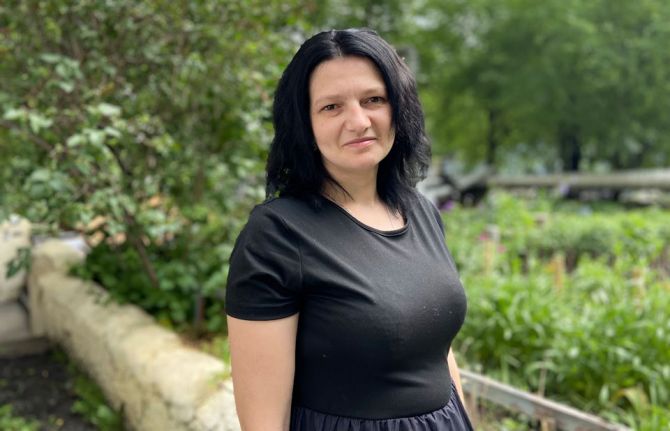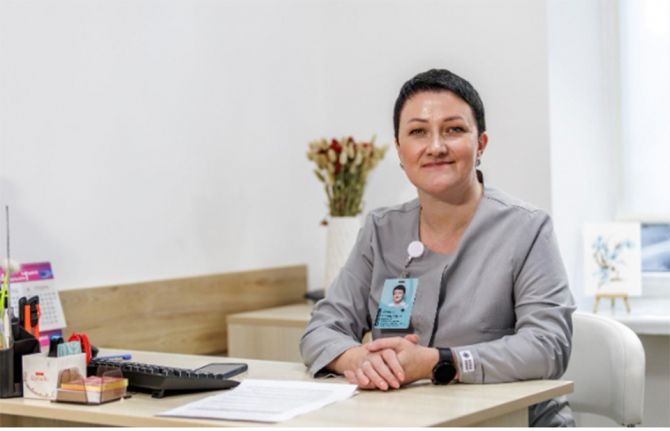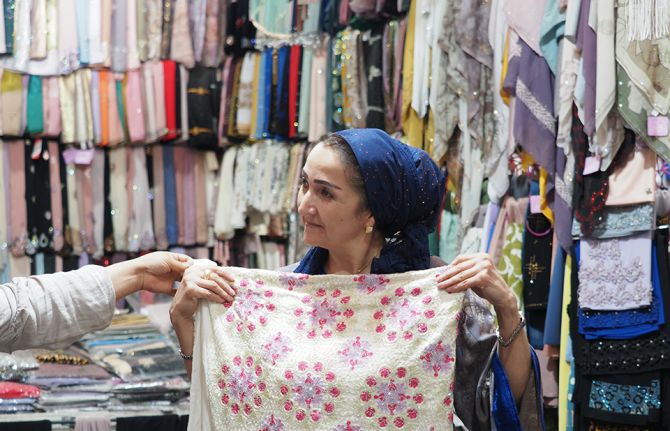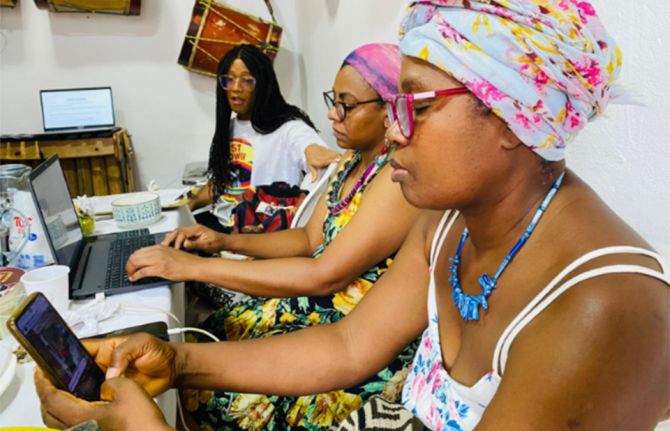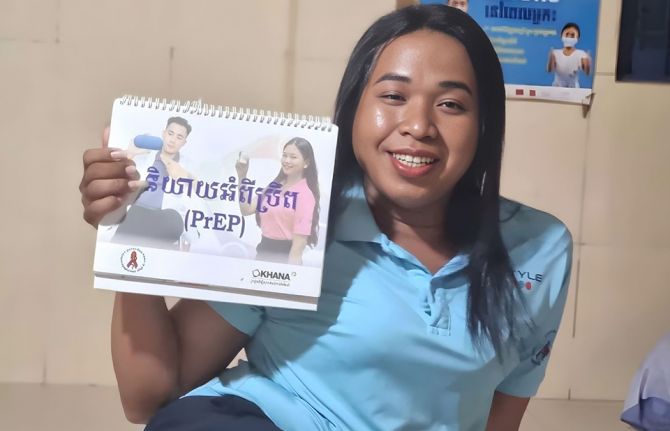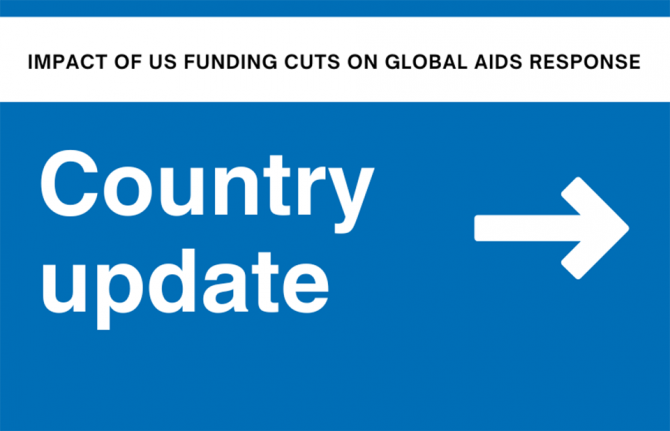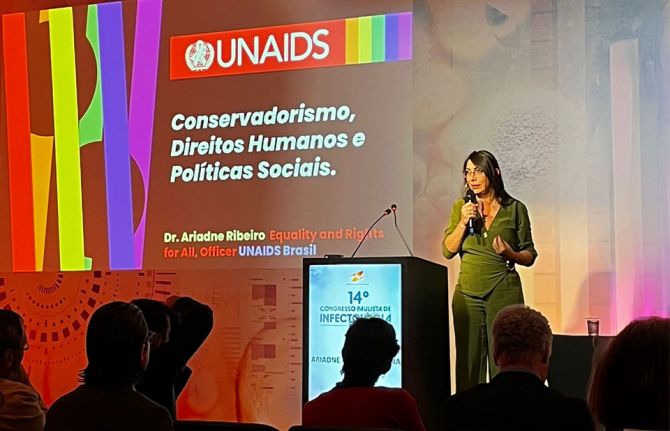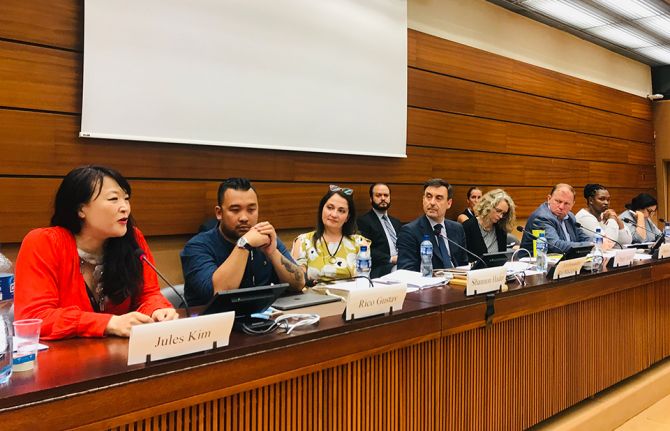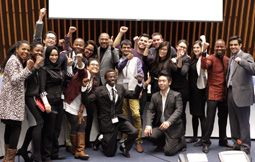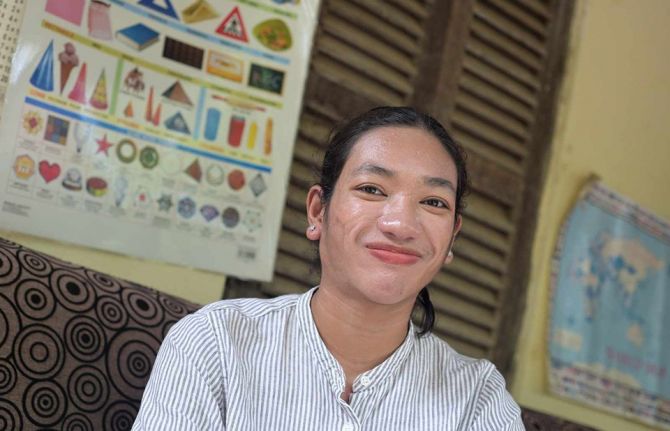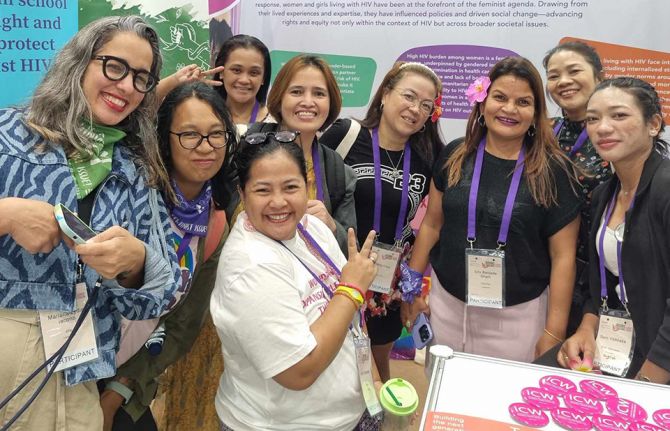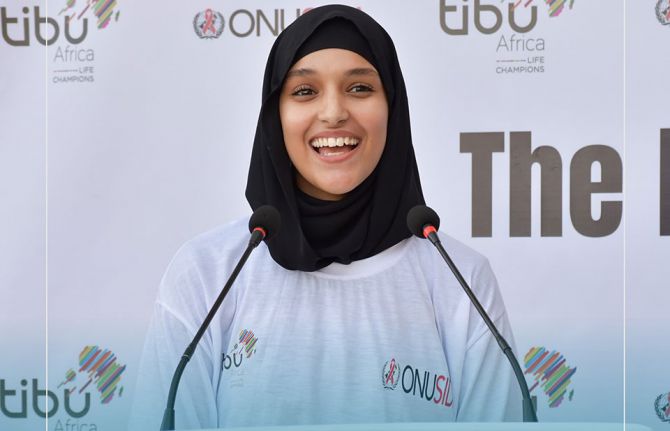
Feature Story
Competition launched to find top social media and mobile phone projects for HIV prevention
30 June 2011
30 June 2011 30 June 2011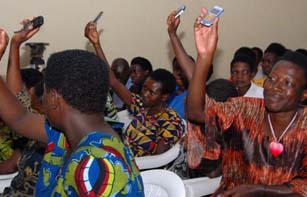
The Elena Pinchuk ANTIAIDS Foundation has launched a competition to develop social media and mobile phone projects for HIV prevention. The competition will reward innovative, start-up projects to show proof of concept and the potential for future scale up to make a real impact on the HIV epidemic.
"To be more efficient with the AIDS messaging we have to use the same language and the same communication platforms as our target audience,” said Ms Pinchuk, founder and chair of the foundation. “Our goal today is to make modern technologies work for HIV prevention. Our dream is a future where AIDS is only mentioned in the past tense."
The initiative offers opportunity to software developers, public health practitioners, HIV programme managers as well as mHealth and social media for health communications professionals to create innovative projects using social media and/or mobile phones for HIV prevention.
To be more efficient with the AIDS messaging, we have to use the same language and the same communication platforms as our target audience
Elena Pinchuk, founder of the ANTIAIDS Foundation
Accepting applications from 30 June to 1 October 2011, projects applying for funding should be either youth-led or have a youth focus, aim to prevent new HIV infections, raise awareness about HIV prevention and/or decrease stigma and discrimination against people living with HIV. Winning projects will be awarded with full or partial funding up to 10,000 USD for the maximum implementation period of one year.
“Young people are in the forefront of the AIDS epidemic—both as those affected and those leading the social and behavioural changes that will prevent HIV,” said Michael Bartos, Strategy team leader from UNAIDS. “The new era of social movements led by ‘digital natives’ will transform the AIDS response and this competition will help create its leading edge,” he added.
Applications will be assessed by a panel consisting of leading technology and HIV prevention experts including Chris Hughes, Executive Director of Jumo International, Inc and a co-founder of Facebook, Garth Japhet, CEO of Heartlines, member of the High Level Commission Scientific Advisory Panel, Bill Roedy, former Chairman and Chief Executive, MTV Networks International, Debbie Rogers, Lead Strategist, Praekelt Foundation and Elena Pinchuk, founder and chair, Elena Pinchuk ANTIAIDS Foundation.
“Young people connect with each other through social media and mobile. As this is their primary means of communication, the next generation of HIV prevention must be through this, said Mr Roedy. “Let's help create the prevention revolution with this technology and go forward with the aim to have an AIDS free generation.”
Winners and amounts granted will be announced on 1 December, World AIDS Day 2011: www.antiaids.org, www.unaids.org and http://www.hivpreventioncommission.com/
For more information about the competition and how to take part visit ANTIAIDS
The ANTIAIDS Foundation was founded by Elena Pinchuk in 2003 and is the first and the sole charity established with private funds against AIDS in Ukraine. The foundation operates at multiple levels—from national programs to direct support to individuals affected by the HIV epidemic. To find out more visit. www.antiaids.org.
The UNAIDS High Level Commission on HIV Prevention was launched on the 21 of July 2010 and includes more than 15 world renowned leaders. The Commission leads a global advocacy campaign to build broad support for effective HIV prevention programmes, and is co-chaired by Professor Francoise Barré-Sinoussi, Nobel Laureate in Medicine for her role in the discovery of HIV, and Archbishop Emeritus Desmond Tutu, Nobel Peace Price Laureate. To find out more visit: http://www.hivpreventioncommission.com/
External links
Related

Feature Story
The Organization of American States adopts resolution that condemns discrimination based on sexual orientation and gender identity
30 June 2011
30 June 2011 30 June 2011
Credit: Patricia Leiva/OAS
A new resolution adopted by the General Assembly of the Organization of American States (OAS), condemns discrimination against persons based on sexual orientation and gender identity. The same resolution urge states to adopt the necessary measures to prevent, punish and eradicate such discrimination.
Under the theme of “citizen security in the Americas,” the 41st General Assembly brought together Ministers of Foreign Affairs and delegates representing 34 countries to El Salvador from 5-7 June 2011.
“This is a success for us and our work,” said German Rincon-Prefetti, lawyer and human rights activist from Colombia and member of the Coalition of Lesbians, Gays, Transgender, Bisexuals and Intersex populations. The Coalition had been advocating over the past five years to strengthen the resolution to protect their human rights.
The General Assembly provided the opportunity, for the first time ever, to a transgender person to address the members present. Speaking on behalf of the Coalition of Lesbians, Gays, Transgender, Bisexuals and Intersex populations, Monica Hernandez shared the Coalition’s concerns about to the wave of violence and hate crime experienced by sexual minorities in the region. “Acts of violence, human rights violations and discrimination practiced against us because of our sexual orientation and gender identity is the reality of our every day life,” she said.
The HIV epidemic in Latin America remains concentrated among men who have sex with men and transgendered persons. The latter group has reported HIV prevalence rates of 27.6% in Argentina and of 29.6% in Peru. At the same time the region has experienced an alarming increase in violence and intimidation towards transgender and other sexual minorities. “All forms of discrimination and violence—including transphobia—block access to HIV prevention programmes and impact the quality of care for people living with HIV. Working for the respect of human rights is at the core of the HIV response in Latin America,” said Edgar Carrasco, UNAIDS Country Coordinator in Venezuela who represented the joint programme at the General Assembly.
UNAIDS has been working with the Inter American Commission on Human Rights (IACHR) since 2010 to support the development of a Hemispheric Report on Sexual Orientation and Gender Identity. The IACHR is a principal organ of the Organization of American States (OAS), mandated by the OAS Charter to promote the observance and protection of human rights in the region.
Now we have an instrument to document the human rights violations we are facing and to make changes for the better
German Rincon-Prefetti, lawyer and human rights activist from Colombia and member of the Coalition of Lesbians, Gays, Transgender, Bisexuals and Intersex populations
German Rincon- Prefetti is optimistic of the impact this resolution will make. “Now we have an instrument to document the human rights violations we are facing and to make changes for the better,” he said. “The new resolution requests IACHR to prepare the Hemispheric Report in time for the next General Assembly to take place in Bolivia in 2012, with the member states full participation and in collaboration with civil society.”
In follow-up to the new resolution, UNAIDS regional office in Latin America, in collaboration with the Pan American Health Organization (PAHO), supported the first of five expert meetings to establish the foundations for the Hemispheric Report on 17-18 June.
The expert meeting developed a network of resource people linked to HIV and health issues for lesbians, gays, transgender, bisexual and intersex populations that will elaborate a roadmap for the Hemispheric report including the draft State and non-State questionnaire. This will provide the comprehensive and standardized information for the report to be implemented in the 35 countries.
Organization of American States
The Organization of American States is a regional international organization whose members are the 35 independent states of the American Continent. It is headquartered in Washington, D.C., United States.
External links
External links
Publications

Feature Story
Historic resolution on human rights violations based on sexual orientation and gender identity adopted at the Human Rights Council
27 June 2011
27 June 2011 27 June 2011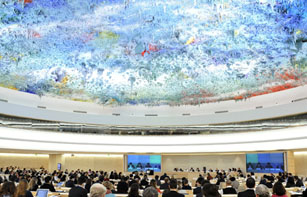
Credit: UN Photo/Jean-Marc Ferré
During its 17th session, the United Nations Human Rights Council passed a historic resolution on human rights violations based on sexual orientation and gender identity on 14 June. Presented to the Human Rights Council by South Africa and Brazil, the draft resolution was cosponsored by 39 countries from all regions of the world. This is the first UN resolution on this subject and it was passed by 23 votes in favour, 19 votes against and 3 abstentions.
Homophobia and transphobia, which block effective responses to HIV, is institutionalized in many parts of the world. In 2010, more than 75 countries criminalized same-sex behaviour—and in some countries, it is punishable by death. Transgender people often face discrimination and violence with recent killings reported in Guatemala and Honduras among other countries.
Entitled Human rights, sexual orientation and gender identity (L.9/Rev.1), the resolution calls for four key actions, including a request to the High Commissioner for Human Rights to commission a worldwide study to document discriminatory laws, practices and acts of violence against individuals based on their sexual orientation and gender identity. The study will also outline how international human rights law can be used to end violence and related human rights violations based on sexual orientation and gender identity.
This resolution is an important step for the international community. We must remove all barriers that prevent people from accessing HIV related services because of stigma and discrimination based on sexual orientation and gender identity
Michel Sidibé, UNAIDS Executive Director
The council also decided to convene a panel discussion to take place during the 19th session of the Human Rights Council, informed by the findings of the study commissioned by High Commissioner. This panel will aim to hold constructive, informed and transparent dialogue on the issue of discriminatory laws and practices and acts of violence against individuals based on their sexual orientation and gender identity.
“This resolution is an important step for the international community. We must remove all barriers that prevent people from accessing HIV-related services because of stigma and discrimination based on sexual orientation and gender identity,” emphasized UNAIDS Executive Director Michel Sidibé.
The recently adopted General Assembly Political Declaration on HIV/AIDS: Intensifying our efforts to Elimination HIV/AIDS, mentions for the first time men who have sex with men as a specific group at higher risk of HIV and states that “many national HIV prevention strategies inadequately focus on populations that epidemiological evidence shows are at higher risk.”
In 2009, 63 out of 67 countries reported a higher HIV prevalence among men who sex with men compared to the general population. Homophobia and transphobia block effective responses to HIV, driving already vulnerable populations underground and out of reach for HIV prevention and treatment services.
UNAIDS’ strategy 2011-2015: Getting to Zero calls for a revolution in HIV prevention to reduce by half new sexually transmitted HIV infections by 2015, including among young people, men who have sex with men and transmission in the context of sex work—a global goal echoed by the 2011 Political declaration on HIV/AIDS mentioned above.
External links
External links
Publications
Publications

Press Release
Women’s football teams ‘Give AIDS the Red Card’ to keep children free from HIV
24 June 2011 24 June 2011GENEVA, 24 June 2011—Captains of national football teams competing in the upcoming FIFA Women’s World Cup 2011 soccer championship in Germany are signing up to the Give AIDS the Red Card appeal in support of a global plan to eliminate new HIV infections among children by 2015. The Give AIDS the Red Card appeal, which was launched by the Joint United Nations Programme on HIV/AIDS (UNAIDS) one year ago at the FIFA 2010 World Cup in South Africa, uses the power and outreach of football to unite the world around stopping new HIV infections in children.
UNAIDS Executive Director Michel Sidibé said, “As the most important international competition in women's football, this tournament provides a platform to raise global awareness about the campaign to keep babies from becoming infected with HIV, and their mothers from dying from AIDS.”
Every day more than 1000 babies are born with HIV. However with access to HIV counseling and testing for pregnant women and their partners, and treatment when needed, the risk of transmission can be brought down to less than 5%.
On signing the pledge, team captains appeal to football players and fans across the world to ‘celebrate life and support the global campaign to prevent mothers from dying and babies from becoming infected with HIV’.
The FIFA Women’s World Cup 2011 is taking place from 26 June to 17 July. So far five captains have signed the appeal; Faye White (England), Sandrine Soubeyrand (France), Rebecca Smith (New Zealand), Ingvild Stensland (Norway), and Christie Rampone (United States).
“One of the great things about representing our country on the big stages is the opportunity for us to support causes we care about,” said U.S. Women’s World Cup Team captain Christie Rampone. “I signed onto a global campaign called Give AIDS the Red Card which helps to generate political action towards ending the AIDS epidemic among babies and young children around the world. I am confident about linking this noble cause with the game we all cherish.”
Rampone, who is among the more experienced U.S. players and will be playing in her fourth World Cup added, “UNAIDS asked the U.S. soccer team to help lead this campaign around the world, and we are happy to lend our support on a global stage to a global problem. The UN wants to end pediatric AIDS by 2015 and so do we!”
The captains of the other competing teams, including Australia, Brazil, Canada, Colombia, Equatorial Guinea, Germany, Japan, DPR Korea, Mexico, Nigeria, and Sweden, will also be encouraged to become “Red Card Advocates” by signing the appeal during the tournament and publicize global efforts to eliminate mother-to-child transmission of HIV by 2015.
There are 34 million people globally living with HIV, of whom 22.5 million are in sub-Saharan Africa. Despite progress towards the goal of eliminating new HIV infections among children , in 2009 alone there were 370,000 children born with HIV, bringing to 2.5 million the total number of children under 15 living with HIV.
The 2011 Women’s World Cup is one of several high-profile football championships, including the 2012 African Nations Cup and UEFA Euro 2012, leading up to the 2014 FIFA World Cup in Brazil, that can provide platforms for raising wide awareness about the campaign to eliminate HIV in children.
Press centre
Download the printable version (PDF)

Feature Story
The 28th meeting of the UNAIDS Programme Coordinating Board opens
21 June 2011
21 June 2011 21 June 2011
L to R: UNAIDS Deputy Executive Director, Programme Dr Paul De Lay, UNAIDS Executive Director Michel Sidibé, Health Minister of El Salvador and Chair of the 28th PCB, H. E. Dr Maria Rodriguez
Credit: UNAIDS/F.Chironi
The 28th Meeting of the UNAIDS Programme Coordinating Board (PCB) will meet in Geneva from 21-23 June.
UNAIDS Executive Director Michel Sidibé will present his progress report on 21 June followed by a presentation of the Committee of Cosponsoring Organizations (CCO) report highlighting the joint and specific Cosponsors’ activities during the previous twelve months. The report will be presented by Mr Yury Fedotov, Executive Director of UNODC, on behalf of the current CCO Chair Tony Lake, Executive Director of UNICEF.
The main item at this meeting is the Unified Budget, Results and Accountability Framework (UBRAF) 2012-2015, which the Board will consider for endorsement. As a follow up from the previous PCB meeting that took place in December 2010, the Board will receive a report on the outcomes of the thematic segment on “Food and nutrition security and HIV: how to ensure food and nutrition security are integral parts of HIV programming”, and their integration into the work of the Joint Programme. The Board will also receive a progress report on the implementation of the Agenda for Accelerated Action on Women and Girls by country.
Related information
Related information
Speeches
Related
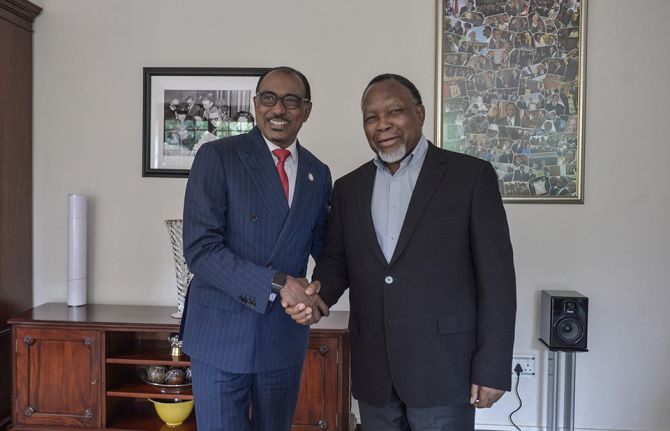 Keeping up the momentum in the global AIDS response
Keeping up the momentum in the global AIDS response

24 April 2019
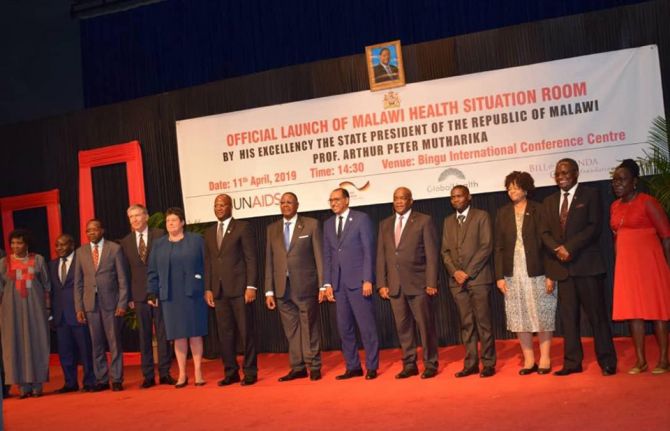 Malawi launches its health situation room
Malawi launches its health situation room

12 April 2019
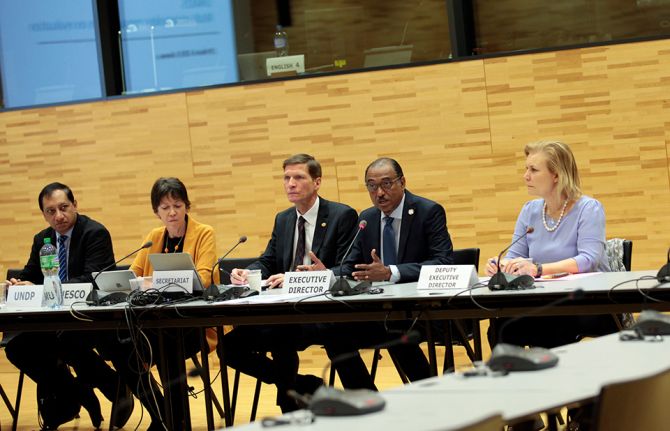 Learning lessons on evaluation
Learning lessons on evaluation

02 April 2019

Feature Story
Faith leaders discuss ending stigma at prayer breakfast meeting
17 June 2011
17 June 2011 17 June 2011
Bishop Yvette Flunder addresses the inter-faith prayer breakfast held at Ford Foundation in New York City on 10 June.
Credit: Barry Mason/EAA
On the closing day of the United Nations General Assembly High Level Meeting on AIDS, faith-leaders came together with people living with HIV, representatives from key populations at higher risk of infection and other partners in the AIDS response to discuss ways to end stigma and to build strong collaborative partnerships for future action at country level.
The inter-faith prayer breakfast was co-organized by the Ecumenical Advocacy Alliance (EAA), UNAIDS, and UNFPA in collaboration with other religious organizations and was hosted by the Ford Foundation.
Compassion to end stigma
A wide range of different faith traditions participated in the prayer breakfast meeting. Imam Abdul-Malik Ali, from New Jersey, prayed for all to accept the challenges posed by HIV and the need to overcome stigma. Rev T.K. Nakagaki, Pastor of the Buddhist Church in America, reminded participants of the importance of respect for life, of remembering lives lost due to AIDS and of our interdependence. Rabbi J. Rolando Matalon originally from Buenos Aries, offered a prayer for people living with HIV who suffer from stigma and discrimination.
The panellists then presented their thoughts on how to strengthen and build cross sectoral partnerships in the HIV response in order to ensure that universal access becomes a reality for all by 2015.
His Excellency the President of Fiji Mr Ratu Epeli Nailatikau said he was reminded of the Bible teachings, “which point us in the direction of searching out the one individual who is marginalized and reaching out to them with compassion.”
It is time to build a bridge between key affected populations and world religious leaders to make sure no one is left behind in the next steps that we all are going to take
Mr Pablo Torres Aguilera, youth advocate from Mexico
Her Excellency Mrs Callista Mutharika, First Lady of the Republic of Malawi; highlighted the key role of faith based organizations in providing both HIV health care and home-based care services in Malawi.
Faith leaders play an important in the AIDS response as religious institutions provide upwards of 30% of health care and education services across Africa where the almost 70% of new HIV infections occurred in 2009. Voluntary care workers, many of whom are faith-based, make a significant contribution to human resources in countries on the African continent which is home to around 22.5 million people living with HIV.
Dr Asha-Rose Migiro, Deputy Secretary-General of the United Nations, reminded the audience of faith leaders and others that those from religious institutions can be among the most effective advocates against stigma. "You are natural activists who can change attitudes."
Bishop Yvette Flunder from the USA spoke on how "our healing must be untied from judgement and tied to justice." This statement became the recurring theme of the breakfast. Building on her words, Mr Pablo Torres Aguilera, a 25-year-old youth advocate from Mexico, issued a strong call for action: “It is time to build a bridge between key affected populations and world religious leaders to make sure no one is left behind in the next steps that we all are going to take,” he said.
This was followed by interactive table discussions among participants in which there was consensus on the importance of responses based on compassion and care as powerful methods of eliminating stigma and discrimination towards people living with HIV.
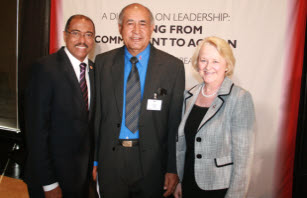
(From left) UNAIDS Executive Director Mr Michel Sidibé; His Excellency the President of Fiji Mr Ratu Epeli Nailatikau; UNAIDS Deputy Executive Director, Management and External Relations Ms Jan Beagle.
Credit: UNAIDS
Echoing Bishop Flunder's words, participants called for HIV responses that are offered in a way that gives dignity to the people who are most marginalized in society. Participants agreed that the specific naming of the key affected populations is important to give someone dignity and respect—be it men who have sex with men, sex workers, transgender people, people who use drugs or others who face marginalization, stigma and discrimination.
Closing the table discussions co-moderator Bishop Emeritus of Oslo Rev Gunnar Stålsett thanked Mr Torres Aguilera for his remarks, and said: "Thank you for being specific, sometimes we do not dare to mention vulnerable groups by name, you have done that, you have broken the barrier." Co-moderator Rabbi Julie Schonfeld said: "We were blessed with the opportunity to have people of so many faith traditions engaged in dialogue today, with our shared desire to bring HIV deaths to zero"
The breakfast closed with three prayers. Mr Homi D. Gandhi (Zoroastrian Association) offered a prayer for the whole harmony of human kind. Swami Pragyapad from India prayed for protection, nourishment, strength, and that we would not oppose each other. In the closing prayer, the Rev. Leonid Kishkovsky, moderator of Religions for Peace, urged all to "move from words of comfort to courageous action."
Also present at the inter-faith event were Rabbi Julie Schonfeld, Rabbi, Executive Vice President of the Rabbinical Assembly, New York; and Imam Umer Ahmed Ilyasi, President and Chief Imam of the All India Organization of Imams of Mosques, UNAIDS Executive Director Mr Michel Sidibé, Dr Purnima Mane, Deputy Executive Director of UNFPA and Mr Peter Prove, Executive Director of the Ecumenical Advocacy Alliance.
External links
Related
 Keeping up the momentum in the global AIDS response
Keeping up the momentum in the global AIDS response

24 April 2019
 Malawi launches its health situation room
Malawi launches its health situation room

12 April 2019
 Learning lessons on evaluation
Learning lessons on evaluation

02 April 2019

Feature Story
Partners come together to lessen HIV-risk for migrants and mobile populations
10 June 2011
10 June 2011 10 June 2011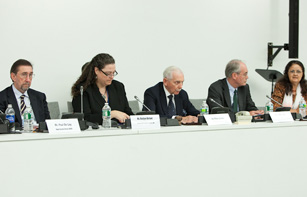
(Left to Right): Paul De Lay, UNAIDS Deputy Executive Director; Ms. Rosilyne Borland, HIV and Health Promotion Coordinator, IOM; Ambassador William Lacy Swing, Deputy General, IOM; Mr. Udo Janz, Director of UNHCR New York; Dr. Sophia Kisting, Director, ILO/AIDS; at Migration and HIV event, held at UN Headquarters, NYC, on June 10, 2011.
Credit: UNAIDS/B. Hamilton
For the world’s 214 million international migrants and 740 million internal migrants the sometimes challenging conditions of the migration process can leave them vulnerable to HIV infection. Yet, even with the increasing interest in the health and human rights of this key group, the links between migration, population mobility and HIV are still not widely understood.
During the General Assembly High Level Meeting on AIDS in New York governments, civil society partners and intergovernmental agencies came together to explore the relationship between migration and the AIDS epidemic and to examine ways of increasing access to HIV services for people on the move.
The side-event, on 10 June, was sponsored by the International Organization for Migration (IOM), the International Labour Organization (ILO), the UN High Commissioner for Refugees (UNHCR) and UNAIDS.
Ambassador William Lacy Swing, IOM’s Director General and Dr Paul De Lay, UNAIDS Deputy Executive Director, Programme, co-hosted the event. This follows the signing of a revised cooperation of agreement between the two organizations in January this year. The agreement addresses the potential vulnerability of migrants to HIV and strengthens efforts to integrate migrants and mobile populations into AIDS policies and programmes at national, regional and international levels.
“We must harness the benefits of migration for migrants and states, by ensuring migrants can access HIV prevention, care, treatment and support services,” said Ambassador Swing.
We must harness the benefits of migration for migrants and states, by ensuring migrants can access HIV prevention, care, treatment and support services
William Lacy Swing, Director General, IOM
Dr De Lay raised an issue which many ‘people on the move’ face on a daily basis: discrimination. He spoke of the need to vigorously challenge discrimination directed at migrants, and would-be migrants, which prevents freedom of movement. These include the HIV-related entry, stay and residency restrictions in some countries. “Every individual should have equal access to freedom of movement regardless of HIV status. UNAIDS opposes restrictions that single out HIV for special treatment and that restrict movement based on HIV status only. Such restrictions are discriminatory,” he said.
Best practices
The side-event emphasized the importance of sharing best practices and lessons learned by governments and civil society on managing migration and HIV and ensuring the rights of migrants to access health and social services.
It was acknowledged that while mobility in and of itself does not necessarily result in increased health risks, the sometimes challenging conditions of the migration process—before migration, during movement, in destination communities and upon return—may impact the health of migrants and make them more vulnerable to the virus.
International commitments
The meeting explored progress on a number of international commitments and policy frameworks such as sections of the 2001 UNGASS Declaration of Commitment on AIDS which facilitate access to HIV programmes for migrants and mobile workers.
Migration-related aspects of the ILO Recommendation on HIV and AIDS and the World of Work, 2010 (No 200) were also discussed. Dr Sophia Kisting, Director of ILO/AIDS, stressed that stigma and discrimination, difficult working conditions and long separation from their families and cultures increase migrant workers’ vulnerability to HIV. “For these reasons, the Recommendation makes special mention of migrant workers. It calls on countries of origin, transit and destination to take measures to ensure access to HIV prevention, treatment, care and support services for such workers,” she said.
Every individual should have equal access to freedom of movement regardless of HIV status
Dr Paul de Lay, UNAIDS Deputy Executive Director, Programme
In its Technical cooperation projects, the ILO has promoted an integrated approach involving a variety of actors, such as government, recruitment agencies and trades unions. Programmes in Indonesia, Nepal and Sri Lanka have shown the usefulness of this approach and succeeded in including HIV in pre-departure training for labour migrants and initiating policy dialogue between sending and receiving countries.
Addressing such issues is of key importance given that, for example, according to Sri Lanka’s national AIDS committee, some 30-40% of women in Sri Lanka who test positive for HIV have returned home after living in the Middle East.
Udo Janz, Director of UNHCR New York Office, welcomed the chance afforded by the side-meeting to consolidate gains made and chart future action in ensuring migrants and mobile populations, including those forcibly displaced, are provided with HIV services.
UN General Assembly High Level Meeting on AIDS
Thirty years into the AIDS epidemic, and 10 years since the landmark UN General Assembly Special Session on HIV/AIDS, the world has come together to review progress and chart the future course of the global AIDS response at the 2011 UN General Assembly High Level Meeting on AIDS from 8–10 June 2011 in New York. Member States are expected to adopt a new Declaration that will reaffirm current commitments and commit to actions to guide and sustain the global AIDS response.
External Links

Feature Story
Integrating the AIDS response with broader health and development agendas
10 June 2011
10 June 2011 10 June 2011
Ms. Francoise Barré-Sinoussi, Nobel Lauréate, Institut Pasteur, France; Ms. Aditi Sharma, International Treatment Preparedness Coalition; at Panel 5: Integrating the HIV AIDS Response with Broader Health and Development Agendas, held at UN Headquarters, NYC, on June 10, 2011.
UNAIDS/B. Hamilton
Taking AIDS out of isolation and into integration was the focus of the final official panel discussion on the closing day of the UN General Assembly High Level Meeting on AIDS.
Chaired by His Excellency the Second Vice-President of Burundi Gervais Rufyikiri, the panel was moderated by Laurie Garrett Senior Fellow for Global Health at the Council for Foreign Relations and brought together Nobel lauréate Francoise Barre-Sinoussi from the Institut Pasteur; civil society representative Aditi Sharma from the International Treatment Preparedness Coalition; UN Secretary General’s Special Envoy to Stop TB Jorge Sampaio and Norwegian State Secretary for Health State Secretary Ragnhild Mathisen.
Linking HIV to health and development
Thirty years into the HIV epidemic, AIDS has become an integral part of countries’ health and development challenges. But we need to strengthen these links to achieve universal access and ensure sustainability of the HIV response. Panellists identified key benefits and core elements for integrating HIV with other health and development agendas and discussed how the strengths of the AIDS response can be leveraged to the benefit of these issues.
“HIV responses cannot operate in isolation. Further scale up requires functioning integrated health systems and communities that are empowered through access to essential rights and goods, including food, nutrition and basic education,” said Francoise Barre Sinoussi.
The panel highlighted the lessons from integration of HIV and tuberculosis (TB) programmes and services and discussed links with sexual and reproductive health services and maternal, newborn and child health services, including efforts to eliminate new HIV infections among children and keeping their mothers alive. Mr Sampaio made a passionate plea to implement the recommended package of integrated TB/HIV services in order to prevent one million TB deaths in people living with HIV by 2015.
It was also noted that, as access to antiretroviral therapy expands, the HIV response is evolving from a disease-specific emergency response to a chronic disease management challenge which needs to be addressed within the context of other chronic health conditions. Many countries with a high HIV prevalence are also facing burgeoning epidemics of other chronic infections, such as Hepatitis B and C, and non-communicable diseases (NCD), such as cardio-vascular and chronic respiratory diseases and diabetes.
The panel emphasized that the benefits of an integrated approach to TB and HIV service-delivery to patients, programmes and partners are reflected in better access to comprehensive care, cost savings and reduced morbidity and mortality. Brazil’s combined approach to HIV and Hepatitis C was cited as an example of integrated, client centred approach. Similarly, the prevention of mother-to-child transmission of HIV—including treatment and care for mothers and their children—was highlighted as an integral and critical components to achieve Millennium Development Goal (MDG) 4 and MDG 5 and the UN Secretary-General’s ‘Global Strategy for Women’s and Children’s Health’.
The time is right, concluded the panel, to explore ways in which the scale up of HIV prevention, treatment, care and support may be leveraged to strengthen not only high-quality health services during specific periods of life—such as pregnancy and childhood—but responses to a range of other health conditions and development challenges development issues for example food security, poverty, drug dependence, human rights and gender. Mitigating the impact of HIV is therefore essential to achieving MDG 6 and other development goals.
Watch the event
External links
External links
Publications
Publications
Related
 Keeping up the momentum in the global AIDS response
Keeping up the momentum in the global AIDS response

24 April 2019
 Malawi launches its health situation room
Malawi launches its health situation room

12 April 2019
 Learning lessons on evaluation
Learning lessons on evaluation

02 April 2019

Press Release
World leaders launch plan to eliminate new HIV infections among children by 2015
09 June 2011 09 June 2011
(Left to Right): Michel Sidibé, UNAIDS Executive Director; President Bill Clinton; Ban Ki-moon, Secretary General of the UN; Goodluck Jonathan, President of Nigeria; Dr Eric Goosby, US Global AIDS Ambassador, Anthony Lake, UNICEF Executive Director, at launch of the Global Plan towards elimination of new HIV infections among children and keeping their mothers alive, at UN Headquarters, NYC, 9 June 2011.
Credit: UNAIDS/B. Hamilton
NEW YORK/GENEVA, 9 June 2011—World leaders gathered in New York for the 2011 United Nations High Level Meeting on AIDS have today launched a Global Plan that will make significant strides towards eliminating new HIV infections among children by 2015 and keeping their mothers alive.
“We believe that by 2015 children everywhere can be born free of HIV and that their mothers can remain healthy,” said Michel Sidibé, Executive Director of UNAIDS. “This new global plan is realistic, it is achievable and it is driven by the most affected countries.”
“Nearly every minute, a child is born with HIV. Working together, we can reverse this tide as we have done in the United States and they are very close to doing in Botswana,” said Ambassador Eric Goosby, the United States Global AIDS Coordinator. “Preventing new HIV infections among children across the globe is truly a smart investment that saves lives and helps to give children a healthy start in life.”
Providing pregnant women living with HIV with antiretroviral prevention and treatment reduces the risk of a child being born with the virus to less than 5%—and keeps their mothers alive to raise them. Neither technical nor scientific barriers stand in the way of responding to this global call to action. The plan notes that what is needed is leadership, shared responsibility and concerted action among donor nations, recipient countries and the private sector to make an AIDS-free generation a reality.
In answering the Global Plan’s call to action, the United States President's Emergency Plan for AIDS Relief (PEPFAR) announced an additional US$ 75 million to preventing mother-to-child transmission of HIV (PMTCT) efforts. This funding will be on top of the approximately US$ 300 million that PEPFAR already provides annually for PMTCT.
The Bill & Melinda Gates Foundation pledged US$ 40 million, Chevron committed to US$ 20 million and Johnson & Johnson pledged US$ 15 million.
"Investments in preventing mother-to-child transmission are greatly needed and the Bill & Melinda Gates Foundation is committed to ensuring that such initiatives are fully integrated into family planning and maternal, newborn, and child health programmes," said Stefano Bertozzi, Director of HIV and tuberculosis at the Foundation.
“Chevron understands that its sustainability as a business is inextricably linked to the health and well-being of its employees and the communities in which it operates,” stressed Rhonda Zygocki, Executive Vice President, Policy and Planning, for Chevron Corporation. “We are proud to pledge US$ 20 million, joining in this mission to eliminate mother-to-child transmission of HIV.”
“We have a dream that no baby will be born HIV positive and today’s pledge continues the Johnson & Johnson enduring commitment to eliminating mother-to-child transmission of HIV,” said Brian Perkins, Corporate Vice President, Corporate Affairs. “It is another step in fulfilling our commitment to support achievement of the Millennium Development Goals, and reflects our long-standing dedication to improving maternal and child health.”
In 2009, approximately 370 000 children were born with HIV—almost all of them in low- and middle-income countries, mainly in sub-Saharan Africa. Under the Global Plan, the goal would be to work toward reducing this number by 90% by 2015. All 22 of the countries with the highest burden of new HIV infections among children have contributed to the development of the plan and signed up to implement it.

(Left to Right): Babalwa Mbono, Representative of Women Living with HIV; Michel Sidibé, UNAIDS Executive Director; President Bill Clinton at launch of the Global Plan towards elimination of new HIV infections among children and keeping their mothers alive.
Credit: UNAIDS/B. Hamilton
The Global Plan towards the elimination of new HIV Infections among children by 2015 and keeping their mothers alive was developed by a group of more than 30 countries and 50 community groups, non-governmental and international organizations. The group was convened by UNAIDS and PEPFAR.
Babalwa Mbono found out she was HIV positive when she became pregnant. “Helping pregnant women to protect their babies is really important,” she said. “Like all mothers, I would do anything to give my child a healthy start in life—and this prevention should be available to women everywhere.”
"We can only achieve a generation free of HIV and AIDS by focusing our efforts on the mothers and children at greatest risk and in greatest need," urged UNICEF Executive Director Anthony Lake. "The investments we make in preventing maternal-to-child transmission of HIV—and in expanding more women's access to quality care—will yield tremendous returns, not only in the lives of children and families affected by HIV and AIDS, but in improving mothers' and children's health in the poorest countries that bear the greatest burden of the AIDS epidemic."
The plan focuses on a series of specific policy and programmatic measures which countries will take to ensure that all pregnant women living with HIV have access to HIV prevention and treatment services and that new HIV infections among children are eliminated by 2015. The plan also includes efforts to provide treatment to mothers and children living with HIV during breastfeeding and referral to ongoing HIV prevention and treatment programmes thereafter.
The key elements of the Global Plan include ensuring that:
- All women, especially pregnant women, have access to quality life-saving HIV prevention and treatment services—for themselves and their children.
- The rights of women living with HIV are respected and women, families and communities are empowered to fully engage in ensuring their own health and, especially, the health of their children.
- Adequate resources—human and financial—are available from both national and international sources in a timely and predictable manner while acknowledging that success is a shared responsibility.
- HIV, maternal health, newborn and child health and family planning programmes work together, deliver quality results and lead to improved health outcomes.
- Communities, in particular women living with HIV, are enabled and empowered to support women and their families to access the HIV prevention, treatment and care that they need.
- National and global leaders act in concert to support country-driven efforts and are held accountable for delivering results.
The plan also includes a detailed timetable for action at community, national, regional and global levels to ensure rapid progress towards elimination of new HIV infections in children by 2015 and keeping their mothers alive.
About the Global Plan
This Global Plan provides the foundation for country-led movement towards the elimination of new HIV infections among children and keeping their mothers alive. The Global Plan was developed through a consultative process by a high level Global Task Team convened by UNAIDS and co-chaired by UNAIDS Executive Director Michel Sidibé and United States Global AIDS Coordinator Ambassador Eric Goosby. It brought together 30 countries and 50 civil society, private sector, networks of people living with HIV and international organizations to chart a roadmap towards achieving this goal by 2015.
This plan covers all low- and middle-income countries, but focuses on 22 countries [1] with the highest estimate of HIV-positive pregnant women. Exceptional global and national efforts are needed in these countries that are home to nearly 90% of pregnant women living with HIV in need of services. Intensified efforts are also needed to support countries with low HIV prevalence and concentrated epidemics to reach out to all women and children at risk of HIV. The Global Plan supports and reinforces the development of costed, country-driven national plans.
UNAIDS
UNAIDS, the Joint United Nations Programme on HIV/AIDS, is an innovative United Nations partnership that leads and inspires the world in achieving universal access to HIV prevention, treatment, care and support. Learn more at unaids.org.
PEPFAR
The U.S. President's Emergency Plan for AIDS Relief (PEPFAR) is the U.S. Government initiative to help save the lives of those suffering from HIV/AIDS around the world. This historic commitment is the largest by any nation to combat a single disease internationally, and PEPFAR investments also help alleviate suffering from other diseases across the global health spectrum. PEPFAR is driven by a shared responsibility among donor and partner nations and others to make smart investments to save lives. Learn more at www.pepfar.gov.
[1] Angola, Botswana, Burundi, Cameroon, Chad, Côte d’Ivoire, Democratic Republic of the Congo, Ethiopia, Ghana, India, Kenya, Lesotho, Malawi, Mozambique, Namibia, Nigeria, South Africa, Uganda, United Republic of Tanzania, Swaziland, Zambia and Zimbabwe.
Contact
UNAIDS GenevaSophie Barton-Knott
tel. +41 22 791 1697
bartonknotts@unaids.org
Office of the U.S. Global AIDS Coordinator
U.S. Department of State
tel. +1 202 663 2708
PetersonJL@state.gov
Press centre
Download the printable version (PDF)

Feature Story
Call for leaders to champion the needs of women and girls in HIV policy and programming
10 June 2011
10 June 2011 10 June 2011.jpg)
Thematic panel discussion, “Women, Girls, and HIV”, which focuses on the disproportionate burden of HIV that is carried by women and girls around the world. (Left to right): Stephanie Nolan, journalist at the “Globe and Mail”; Hanno Pevkur, Minister of Social Affairs for Estonia; and Dr Aaron Motsoaledi, Minister of Health for the Republic of South Africa. UN Headquarters in New York, 9 June 2011
Credit: UN Photo/Eskinder Debebe
Women, girls and HIV was the theme of a high level panel which was held at the United Nations on Thursday 9 June. The event, which forms part of the UN General Assembly High Level Meeting on AIDS, was chaired by Hanno Pevkur, Minister of Social Affairs, Estonia.
The interactive discussion was moderated by Stephanie Nolen and the high level panel included Dr Aaron Motsoaledi, Minister of Health, Republic of South Africa; Dr Babatunde Osotimehin, Executive Director of UNFPA, represented the United Nations; and Siphiwe Hlophe, the co-founder of the non-governmental organization Swaziland for Positive Living.
“In 30 years of dealing with HIV,” explained Mr Pevkur, “we have learned that it is as much a social as a medical problem; and the lack of quality of sexual reproductive health and rights services, violence, harmful cultural practices, are fuelling the epidemic.”
We will not attain a sustainable response if we do not invest in women with education and economic empowerment
Siphiwe Hlophe, the co-founder of the non-governmental organization Swaziland for Positive Living
To explore the issue, the panellists and speakers from the floor responded to a series of questions and identified strategies that will help the HIV response to spark social transformation for women and girls to secure their human rights and protect themselves against HIV. They discussed ways to ensure that the specific needs and vulnerabilities of women and girls are adequately addressed in the response to HIV.
Unequal opportunities
In many societies, women face barriers in accessing HIV prevention, treatment, care and support services due to limited decision-making power, lack of control over financial resources, restricted mobility and unequal care responsibilities. Lack of education is another major barrier; around two-thirds of the world’s 796 million illiterate adults are women.
“We will not attain a sustainable response if we do not invest in women with education and economic empowerment,” said Ms Hlophe who highlighted need to engage communities including at the rural level so that all women are empowered. There was consensus that comprehensive sexuality education, which includes HIV education, is a key component of effective evidence-informed HIV prevention. Such education should be made available in a non judgemental, youth-friendly way, to adolescents and young people in and out of schools, and must include human rights and gender equality.
Challenge violence against women
One of the event findings was that stopping AIDS requires acting to stop violence against women at every level. “Violence against women is both a cause and a consequence of HIV,” said Minister Pevkur. The participants discussed how to better address the linkages between violence against women and girls and HIV as well as the social determinants that increase their vulnerability to HIV infection.
The risk of HIV among women who have experienced violence may be up to three times higher than those who have not. The prevalence of forced first sex among adolescent girls below 15 years ranges between 11% and 45% globally. Laws and policies that prevent and punish violence against women, including harmful traditional norms, and effective implementation, are paramount the speakers concluded.
Ensure access to comprehensive HIV and sexual and reproductive health services
There were calls for political leaders and stakeholders to champion “women- and girl- tailored” approaches in policy and programming. Another recommendation was the need to ensure that women in all their diversity, including adolescent girls and young women, have access to comprehensive HIV and sexual and reproductive health services, free of violence, discrimination, and coercion.
Uphold women’s human rights
It is crucial for governments to commit to fulfil all women’s human rights, including their sexual and reproductive health and rights. There is an urgent need for a clear target which views women in their entirety, across their lifespan, and not solely as mothers.
Invest in women and girls
The discussion also highlighted the need for greater and sustainable investment in the leadership of women and girls, as well as in strengthening women’s rights organizations and networks of women living with HIV, is needed to achieve the meaningful engagement of women and girls in the response to HIV
UN General Assembly High Level Meeting on AIDS
Thirty years into the AIDS epidemic, and 10 years since the landmark UN General Assembly Special Session on HIV/AIDS, the world has come together to review progress and chart the future course of the global AIDS response at the 2011 UN General Assembly High Level Meeting on AIDS from 8–10 June 2011 in New York. Member States are expected to adopt a new Declaration that will reaffirm current commitments and commit to actions to guide and sustain the global AIDS response.
External links
External links
Publications
Publications
- Backgrounder Panel 4: Women, girls and HIV (pdf, 186 Kb)

